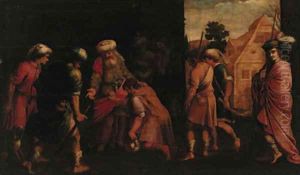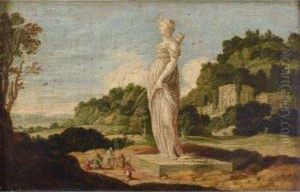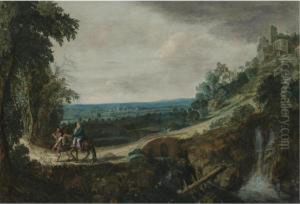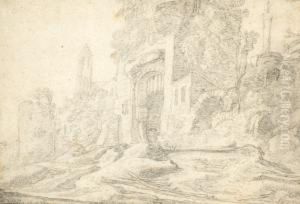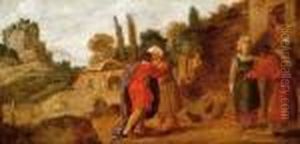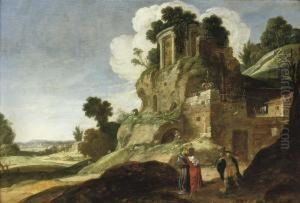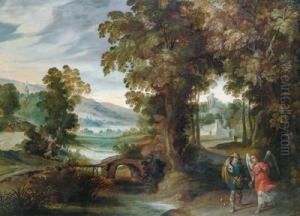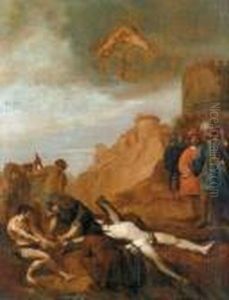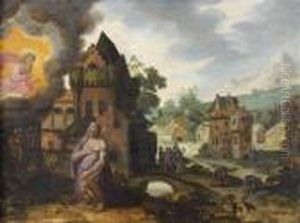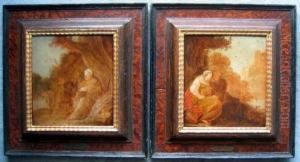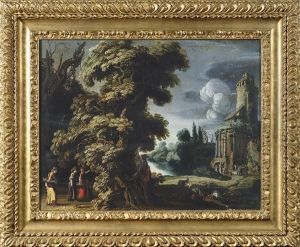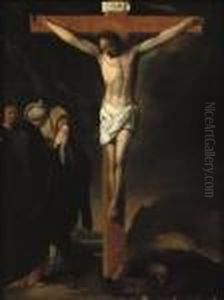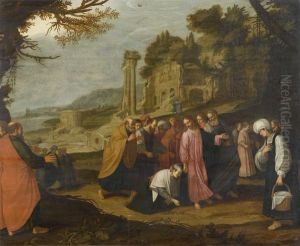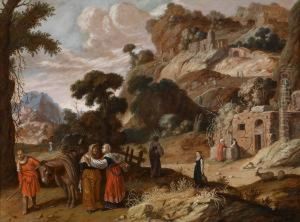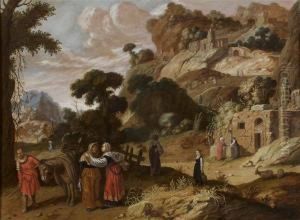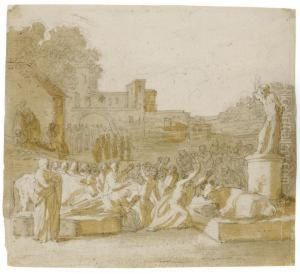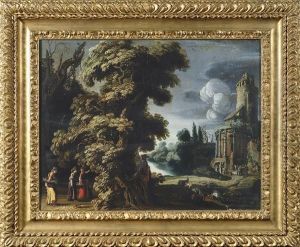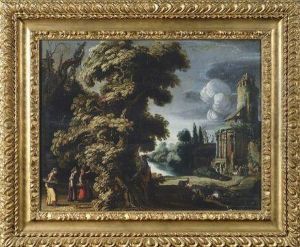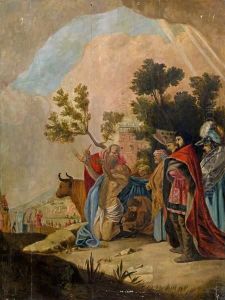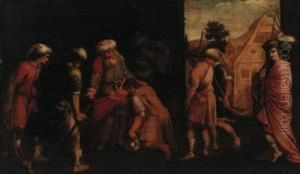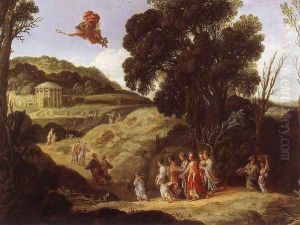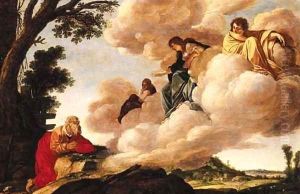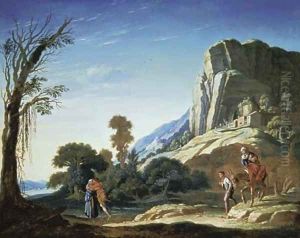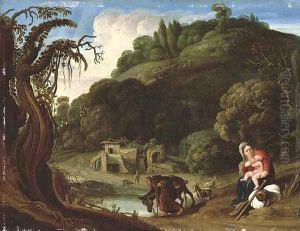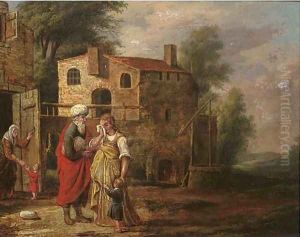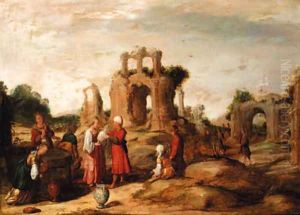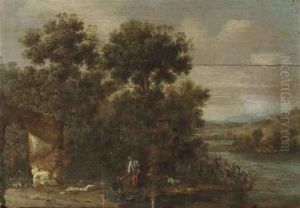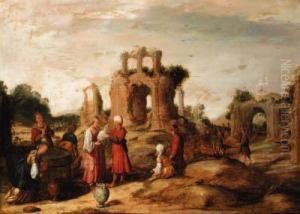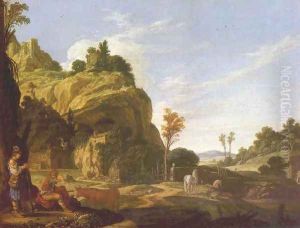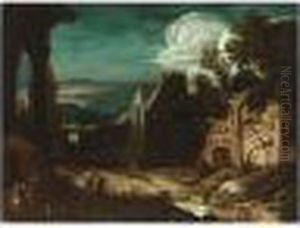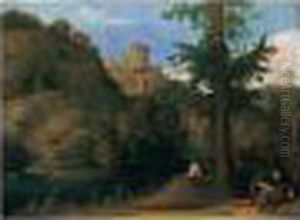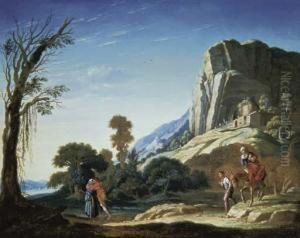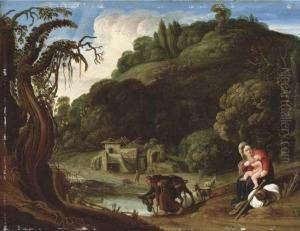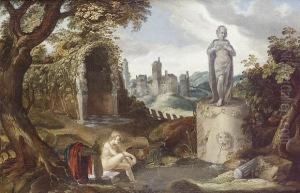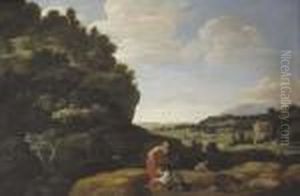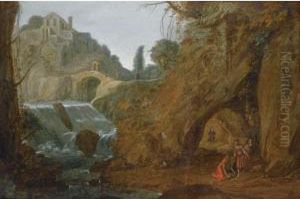Jacob Pynas Paintings
Jacob Pynas was a Dutch Golden Age painter, known primarily for his landscape paintings and works that featured biblical and mythological themes. Born in Haarlem in the late 16th century, Pynas was part of a family of artists, including his brother Jan Pynas, who was also a painter. The exact date of Jacob's birth is uncertain, but it is believed to be either 1592 or 1593.
Pynas likely received his initial training in art from his brother Jan, and he may have been influenced by other Haarlem painters of the period, such as Pieter Lastman, who was Rembrandt's teacher. Jacob Pynas developed a style characterized by a subtle use of color and a serene, poetic quality in his depiction of landscapes and figures. His works often exhibit a keen attention to detail and an emphasis on mood and atmosphere.
In the early 1600s, Jacob Pynas traveled to Italy, which was a common practice among Dutch artists seeking to study the works of Italian masters and the classical antiquities. This journey had a significant impact on his style, as evidenced by the Italianate landscapes and the warmer palette seen in his later works. The Italian influence is particularly noticeable in his choice of settings and the incorporation of classical ruins in his compositions.
Upon his return to the Netherlands, Pynas continued to paint and achieved some level of success. His paintings were appreciated for their compositional harmony and the gentle interplay of light and shadow. Despite this, little is known about his life, and his works were often overshadowed by those of his contemporaries, including his brother Jan and the more famous Rembrandt.
The exact year of Jacob Pynas' death is also unclear, but it is thought to have occurred around 1650. Today, his paintings are held in various collections and museums, where they continue to be studied and appreciated for their contributions to the Dutch Golden Age of painting. His legacy, while modest in comparison to the towering figures of his time, remains an integral part of the era's artistic tapestry.
